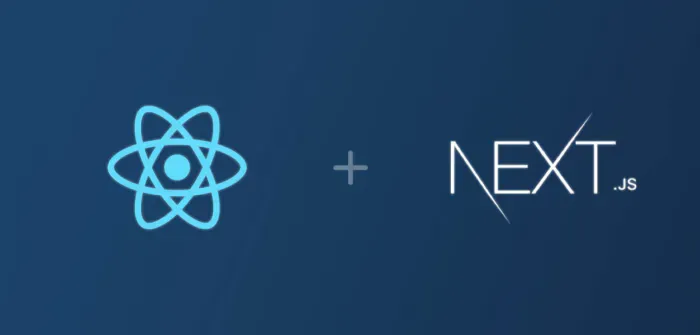Configuring and using the Apollo client in a Next.js TypeScript application
Learn how to integrate the Apollo GraphQL client in a Next.js TypeScript application

Recently, I’ve been doing some research around Next.js & GraphQL.
After looking into the back-end side (which I’ll write about another day), I wanted to test drive some libraries for querying my GraphQL API.
Of course, since I was using Apollo on the back-end, it made sense to go full-circle and use Apollo on the “client-side” too.
In this article, I’ll explain how I’ve integrated it into my Next.js application. Since you know me, it should be obvious that the application uses TypeScript!
Note that I’m no Next.js specialist (nor a React one :p) and thus, I might be wrong about quite a lot of things; you’ve been warned! :)
Let’s go!
Overview
There are a few steps involved to get started with Apollo in a Next.js app:
- Install dependencies
- Write code to set-up the client (the hard-er part)
- Wrap the components with the ApolloProvider (or not)
- Query like crazy & profit!
What makes the process a bit more complicated with Next.js is the fact that it supports different “rendering modes”: fully Static Site Generation (SSG), “incremental static regeneration” (doesn’t that sound epic?), Server-Side Rendering (SSR), etc. Some pages might fetch data once at build time, and be served statically at all times, while others will be dynamic, and rendered at runtime, once, or many times. It’s a bit tricky to get started, but it’s the coolest part of Next.js.
Because the same code will be executed in different circumstances, we need to take that fact into account, as we’ll see in the Apollo client setup.
Let’s see how this works…
Dependencies
There’s normally a single dependency that you need: @apollo/client. For this article, I’m using version 3.3.7.
Apollo client setup
One of the greatest strengths of Apollo is its documentation (next to its jaw-dropping features list): https://www.apollographql.com/docs/react/get-started/. If you’re not familiar with Apollo already, then start there, and come back later on ;-)
Unfortunately (at this point in time), the docs focus only on React and don’t have specific official guidance for Next.js. I did find a post on the Apollo blog that helped me to get started, but it was written in JS, so it only got me so far. At least it helped me understand the different steps!
Create an apollo.tsx file if you want to follow along. Here’s the full code that I’m using:
Now let me explain, step by step.
The first interesting function is createApolloClient :
This function is the only one that actually creates an instance of the Apollo client. The return type could be improved, but it’s a start. Notice that the Server-Side Rendering mode is enabled only when it makes sense. The easiest way to know where the code is currently running is to check whether the global window object is available or not. If it ain’t, then we can probably consider that we’re running on “the server-side” (i.e., build time or actually on the server).
Notice that the client’s link is set using createIsomorphicLink. That function looks as follows:
Once again, the code checks where the code is currently running and creates the schema link differently based on the case we’re in. If the code runs on the server (again, either actually on the server or at build time), then the function uses require calls to load the GraphQL schema directly. If, on the contrary, the code is running on the client-side, then this function uses an HttpLink instead, loading the GraphQL schema using HTTP.
Next up is the initializeApollo function:
This function accepts some initial state and can use it to hydrate the Apollo client. First of all, it retrieves an instance of the ApolloClient if there isn’t one available already. This is important, as it avoids wasting time/resources re-creating new instances needlessly.
If an initial state was passed in, then it is put into the Apollo cache.
If the code is not running in a browser context, then the Apollo client instance is returned. Otherwise, a reference to the client is retained, so that it can be reused (and the cache).
The next function, useApollo, is a hook that wraps the initializeApollo function from before with useMemo, which might or might not be a good idea ;-)
Finally, the withApollo function is a HOC that can be used to wrap a Next.js page/component with an ApolloProvider to make the Apollo client available, without necessarily wrapping the whole application with it.
This is basically the base “toolbox” for using the Apollo client library in Next.js applications. The TypeScript types could certainly be improved, but I’ll leave it at that here.
Wrapping components with the ApolloProvider (or not)
In the various examples that I could find, people seem to wrap their whole Next.js app with the ApolloProvider in the _app.tsx file, like this:
Notice that we’re using the useApollo hook that we saw earlier.
Again, I’m not sure it is necessarily a good idea to do this in the _app.tsx file. It makes sense if you’re using Apollo everywhere and don’t want to worry about the details, but it feels dirty to me to add that around pages/components that don’t need GraphQL at all.
Anyways, as I’ve explained earlier, you also have the option to use the HOC that I included and leave Apollo out of your _app.tsx file altogether.
With this in place, you’re ready to query your GraphQL APIs!
Query like crazy & profit!
Now that the Apollo client is configured, and available where you need it, you’re ready to interact with GraphQL APIs.
As we discussed at the beginning of this article, what makes Next.js really cool is the fact that you have control over when you fetch data and how pages are built. You can decide to fetch data once at build time and have a super performant & SEO-friendly static page, you can choose to render the page once on the server-side at runtime, re-render it dynamically, etc.
Depending on the scenario, you’ll either use the useQuery Apollo hook to send queries (assuming that the ApolloProvider is wrapping your current page/component), use the useApollo hook to retrieve a client directly, or use the getApolloClient function (an alias of the initializeApollo function) inside of getServerSideProps or getStaticProps to retrieve the Apollo client instance and use it.
Here’s an example using getServerSideProps:
In the above example, the query is executed on every request.
By the way, notice the usage of the cool InferGetServerSideProps utility type provided by Next.js. Thanks to this, the props of the component match the output of the getServerSideProps function. Neat!
Here are a few useful/related links:
- https://www.freecodecamp.org/news/how-to-fetch-graphql-data-in-next-js-with-apollo-graphql/
- https://www.youtube.com/watch?v=oxUPXhZ1t9I
- https://nextjs.org/docs/basic-features/data-fetching
Conclusion & next steps
Voilà. You’re good to go. If you’re familiar enough with Next.js and Apollo, the rest should be pure FUN ;-)
In this article, I’ve covered what I’ve learned recently about how to setup/configure Apollo client in a TS Next.js application.
There’s a bit of jumping through hoops to initialize the Apollo client and hydrate it correctly, depending on where the code is executing. It’s far from straightforward if you aren’t used to how Next.js works (like me :p).
Once this is in place, I think that it’s pretty okay, but it’s a bit too involved in my opinion. That why I’m going to continue my exploration and see how urql and SWR compare to Apollo client in Next.js applications.
That's it for today! ✨
About Sébastien
I'm Sébastien Dubois, and I'm on a mission to help knowledge workers escape information overload. After 20+ years in IT and seeing too many brilliant minds drowning in digital chaos, I've decided to help people build systems that actually work. Through the Knowii Community, my courses, products & services and my Website, I share practical and battle-tested systems. You can follow me on X 🐦 and on BlueSky 🦋.
I am an author, founder, and coach. I write books and articles about Knowledge Work, Personal Knowledge Management, Note-taking, Lifelong Learning, Personal Organization, and Zen Productivity. I also craft lovely digital products.
If you want to follow my work, then become a member and join our community.
Ready to get to the next level?
If you're tired of information overwhelm and ready to build a reliable knowledge system:
- 🎯 Join Knowii and get access to my complete knowledge transformation system
- 📚 Take the Course and Master Knowledge Management
- 🚀 Start with a Rock-solid System: the Obsidian Starter Kit
- 🦉 Get Personal Coaching: Work with me 1-on-1
- 🛒 Check out my other products and services. These will give you a rock-solid starting point for your note-taking and Knowledge Management efforts





